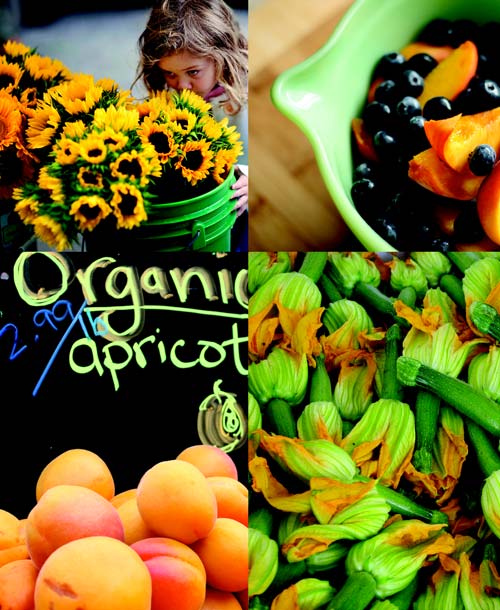 Recently I spent a week in Austin, Texas, where I attended the annual conference of the International Association of Culinary Professionals. For a taste of local color and a bit of homespun humor, our keynote speaker was Jim Hightower, a populist who prides himself on watching over “The Powers That Be on behalf of the Powers That Ought To Be.” Most importantly, he’s a longtime advocate of family farming, organic growing, and local eating. Or, as he puts it, “putting the culture back in agriculture.”
Recently I spent a week in Austin, Texas, where I attended the annual conference of the International Association of Culinary Professionals. For a taste of local color and a bit of homespun humor, our keynote speaker was Jim Hightower, a populist who prides himself on watching over “The Powers That Be on behalf of the Powers That Ought To Be.” Most importantly, he’s a longtime advocate of family farming, organic growing, and local eating. Or, as he puts it, “putting the culture back in agriculture.”
Although Austin is the home of a major upscale grocery chain’s flagship store, Hightower dismisses it as more of a tourist-attraction than a food source. Twice elected Texas Agriculture Commissioner, Hightower knows it’s somewhere between difficult and impossible for a local farmer to get his products placed in one of these giant supermarkets. Instead, he and his family buy directly from their neighboring farmers, as well as those who sell at Austin’s weekly downtown farmers’ market.
Hightower stressed that the pricey merchandise you see in supermarkets may indeed be “organic” when labeled as such, but is still often imported from other states and sometimes even other countries. He knows that agribusiness corporations—those same folks responsible for bringing us genetically-engineered “fresh” tomatoes year ‘round, and packaged “guacamole” that contains no avocado—have been known to use their substantial political clout (i.e., dollars) to influence the definition of words like “organic.” So when Hightower passes by a supermarket produce display, he takes the organic moniker with a grain of salt. Instead, he looks for descriptors like “sustainable” and “local,” which carry far more value for the consumer. And he finds those labels rarely, if ever.
I think you see where I’m going with this. California is obviously ahead of much of the country when it comes to consumer affairs, but the wise shopper will always keep these factors in mind.
And while I’m on the subject, I defy anyone to leave the Danville farmers’ market empty handed this month. The kaleidoscope of colors and intoxicating aromas seduce even the most miserly among us. Even if you harbor a deep-seated aversion to cooking, you can’t help but succumb to the charms of summer’s bounty, as so much of it requires little or no time in the kitchen. Never underestimate the power of a vine-ripened tomato sandwich, fat and fragrant strawberries, or a juicy nectarine eaten out of hand.
Also remember that shopping at the farmers’ market ensures the food you buy has been grown locally and freshly harvested at the peak of ripeness; and that the money you spend there goes directly to the people who grow the food we eat. Oh, and need I mention everything tastes better?
Here’s a Spanish-inspired sauce that makes a colorful and remarkably tasty dip for summer crudités or prawns, especially when served outdoors on a warm evening. Or simply spoon a large dollop of it alongside anything that’s grilled—vegetables chicken, lamb, or fish. It is quickly made from pantry items you may already have on hand; but it’s the locally-grown vine-ripened tomatoes that send it over the top.
ROMESCO SAUCE
- 1/2 cup whole natural (skin-on) California almonds
- 2 vine-ripened plum tomatoes, halved lengthwise
- 3 large garlic cloves
- 1/2 teaspoon cumin seeds
- a heaping 1/2 cup (about 4 ounces) sliced drained piquillo peppers or other bottled roasted red peppers
- 1/3 cup California extra virgin olive oil
- 3 to 4 tablespoons fresh lemon juice
- 1 teaspoon smoked paprika
- 1/8 teaspoon chipotle chile powder, or more to taste
- 1/2 teaspoon salt
- Preheat the oven to 375 degrees. Spread out the almonds on a small baking sheet. Gently squeeze the tomato to remove most of the seeds and set cut-sides down on the sheet. Add 2 of the garlic cloves in their skins. Bake for about 10 minutes, turning the garlic and stirring the nuts once, until the almonds are very lightly browned when broken open. Place the nuts in a blender or food processor. Peel the roasted garlic and add it along with the tomato halves.
- In a small dry skillet, toast the cumin seeds over medium heat, shaking the pan from time to time, until they darken slightly and smell fragrant, about 2 minutes. Add to the blender. Mince the remaining garlic clove and add that as well. Add the piquillo peppers, olive oil, 3 tablespoons of the lemon juice, the smoked paprika, chipotle chile, salt, and 1/4 cup of water. Pulse the machine on and off several times, then puree for 1 to 2 minutes until the sauce is smooth. Taste, and add up to 1 more tablespoon of lemon juice if you think it’s needed. If the dip thickens upon standing, thin with a little more water.
- Transfer to a bowl and serve at once, or cover and refrigerate for up to 3 days. Makes about 11/2 cups, to serve 6 to 8.
Adapted from Great Party Dips by Peggy Fallon (John Wiley & Sons 2009)
The Danville Certified Farmers’ Market, located at Railroad and Prospect, is open every Saturday, rain or shine, from 9 a.m. until 1 p.m. For specific crop information call the Pacific Coast Farmers’ Market Association at 1-800-949-FARM or visit their web site at www.pcfma.com.
Leave a Reply